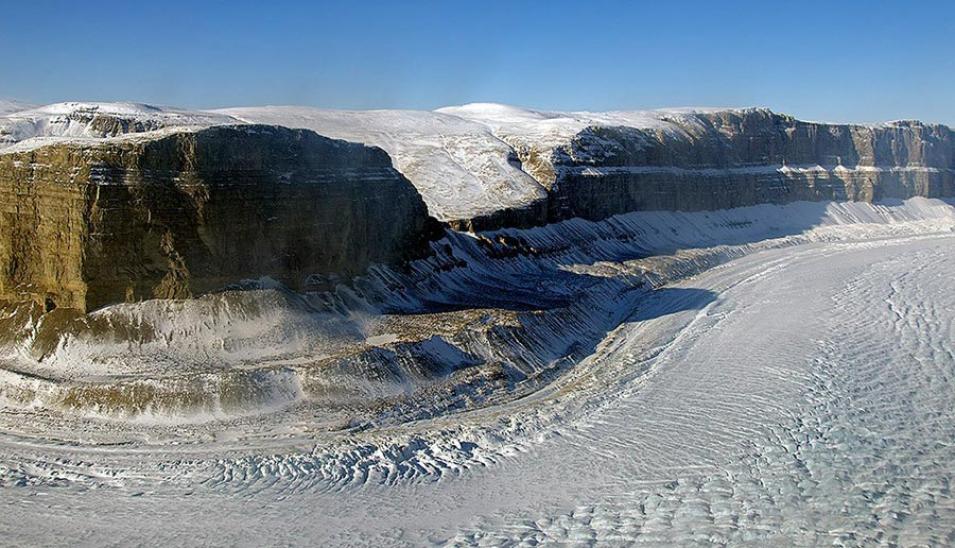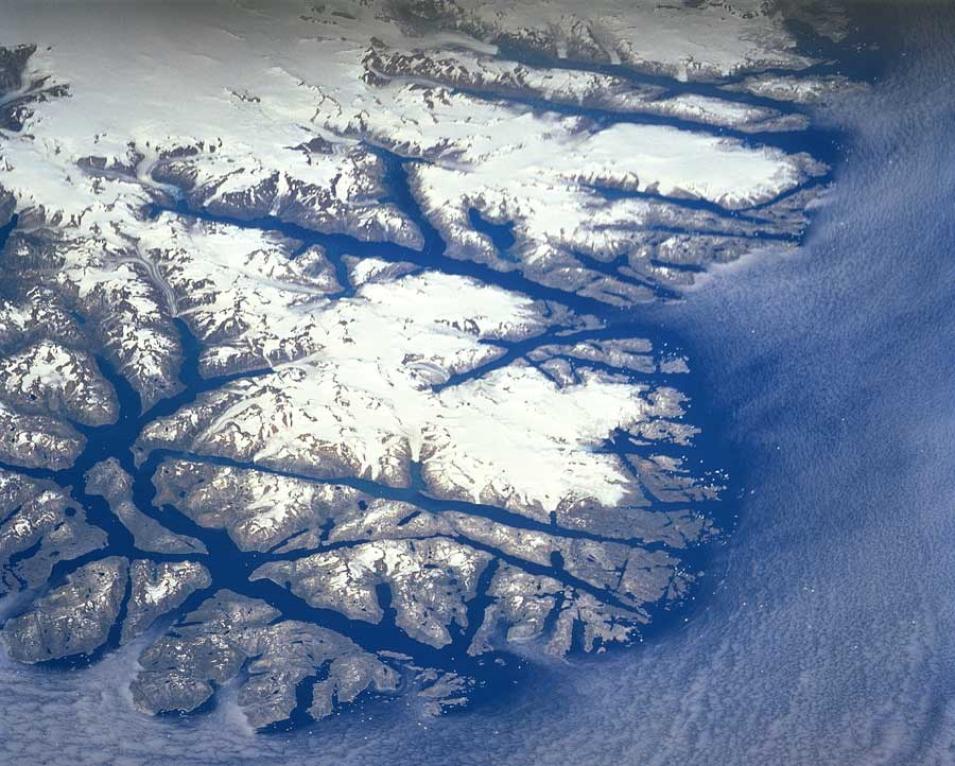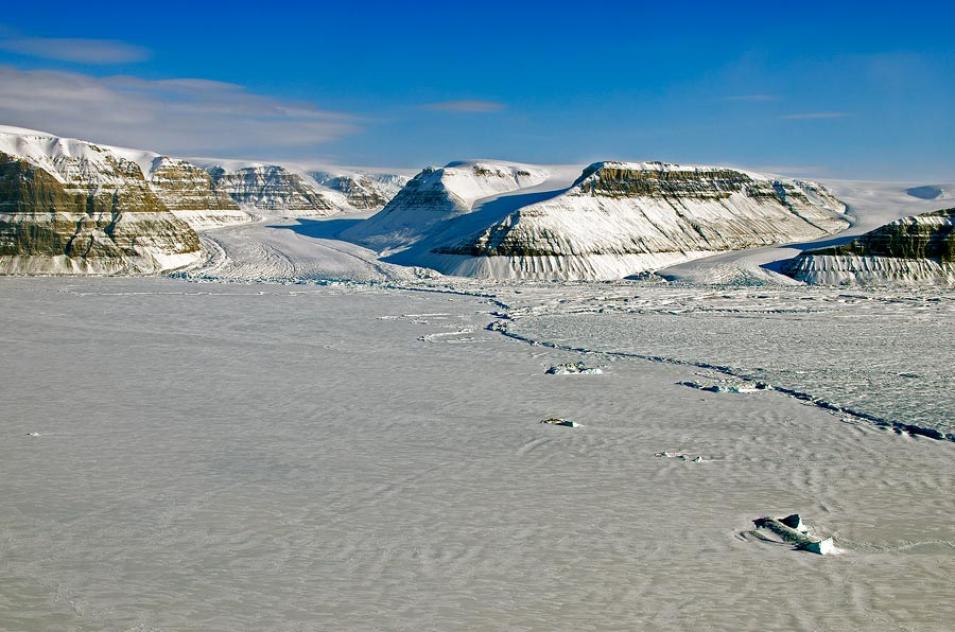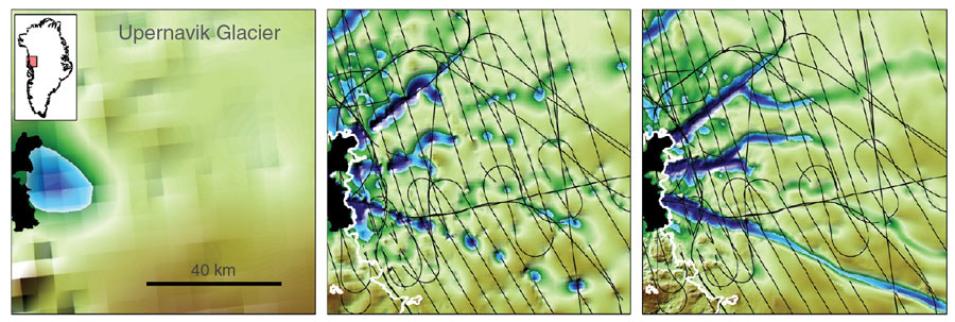Deeply incised
Fast-moving Greenland glaciers such as Jakobshavn Glacier remain important channels for ice discharge. Yet this new view of deep, submarine valleys sheds a different light on the long-term decline of the ice sheet.
“In many places we thought that the bed was raised above sea level but it was below sea level,” Morlighem said. For the first time, for example, they could see that the bed of the three main branches of Upernavik Glacier in West Greenland runs below sea level for more than 80 to 140 kilometers (50 to 87 miles) inland. Up north, Humboldt Glacier’s submarine bed runs 140 kilometers (87 miles) inland. Morlighem said, “We now know that the melting of Greenland is not going to stop in a decade or so. It will keep melting. As the ice retreats, it will still be in contact with the ocean because it will follow it inland.”
The original radar data and the new bedrock data set are both archived at NASA's National Snow and Ice Data Center (NSIDC) Distributed Active Archive Center (DAAC) for further study. “All these efforts will eventually lead to modern data sets for the ice sheets and provide what modelers need to project ice sheets in a warming world. These are critical and timely results,” Rignot said. “The submarine valleys make the glaciers more susceptible to rapid, prolonged retreat. It’s a game changer for sea level. Sea level rise from Greenland will be higher than models currently project.”
References
ALOS PALSAR data 2008-2009 (JAXA, METI). Retrieved from NASA's Alaska Satellite Facility (ASF) Distributed Active Archive Center (DAAC), https://www.asf.alaska.edu.
Bamber, J. L., J. A. Griggs, R. T. W. L. Hurkmans, J. A. Dowdeswell, S. P. Gogineni, I. Howat, J. Mouginot, J. Paden, S. Palmer, E. Rignot, and D. Steinhage. 2013. A new bed elevation dataset for Greenland. The Cryosphere 7: 499–510, doi:10.5194/tc-7-499-2013.
Bamber, J. L., M. J. Siegert, J. A. Griggs, S. J. Marshall, and G. Spada. 2013. Paleofluvial mega-canyon beneath the central Greenland Ice Sheet. Science 341(6149): 997–999, doi:10.1126/science.1239794.
Leuschen, C., P. Gogineni, F. Rodriguez-Morales, J. Paden, and C. Allen. 2010, updated 2015. IceBridge MCoRDS L2 Ice Thickness. Boulder, CO, USA. National Snow and Ice Data Center (NSIDC) DAAC. doi:10.5067/GDQ0CUCVTE2Q.
Morlighem, M., E. Rignot, J. Mouginot, H. Seroussi, and E. Larour. 2014. Deeply incised submarine glacial valleys beneath the Greenland ice sheet. Nature Geoscience 7: 418–422, doi:10.1038/ngeo2167.
Morlighem, M., E. Rignot, J. Mouginot, H. Seroussi, and E. Larour. 2015. IceBridge BedMachine Greenland. Version 2. Boulder, CO, USA: National Snow and Ice Data Center (NSIDC) DAAC. doi:10.5067/AD7B0HQNSJ29.
RADARSAT-1 data 2008-2009 (CSA). Retrieved from NASA's Alaska Satellite Facility (ASF) DAAC, https://www.asf.alaska.edu.
For more information
NASA Alaska Satellite Facility Distributed Active Archive Center (ASF DAAC)
NASA National Snow and Ice Data Center DAAC (NSIDC DAAC)
NASA Operation IceBridge



